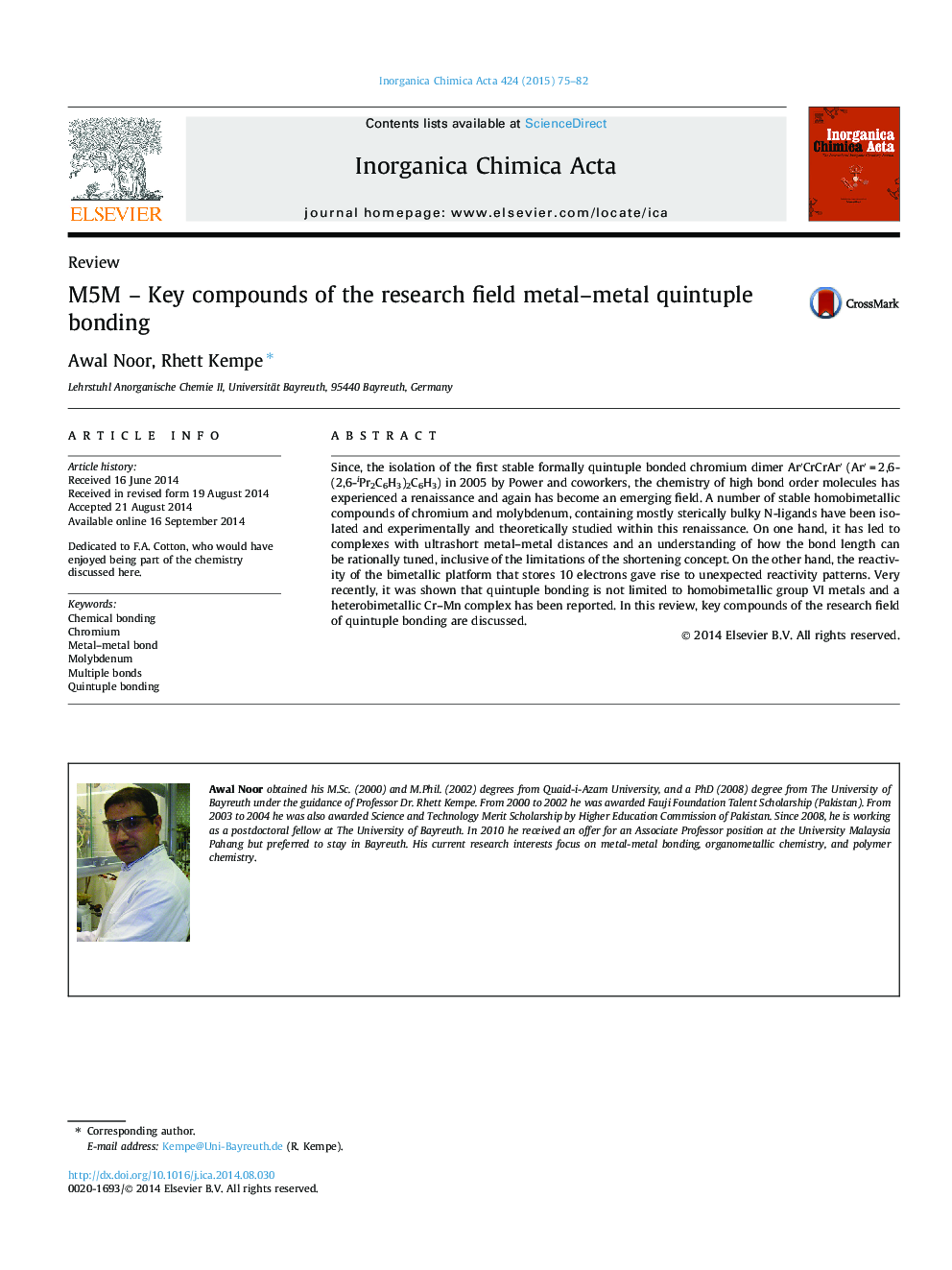| Article ID | Journal | Published Year | Pages | File Type |
|---|---|---|---|---|
| 1312135 | Inorganica Chimica Acta | 2015 | 8 Pages |
•Quintuple bonding in Cr and Mo complexes has been reviewed.•Chromium complexes with ultra-short metal–metal bonds have been reviewed.•Quintuple bond reactivity has been reviewed.•Perspectives of the research field of quintuple bonding were given.
Since, the isolation of the first stable formally quintuple bonded chromium dimer Ar′CrCrAr′ (Ar′ = 2,6-(2,6-iPr2C6H3)2C6H3) in 2005 by Power and coworkers, the chemistry of high bond order molecules has experienced a renaissance and again has become an emerging field. A number of stable homobimetallic compounds of chromium and molybdenum, containing mostly sterically bulky N-ligands have been isolated and experimentally and theoretically studied within this renaissance. On one hand, it has led to complexes with ultrashort metal–metal distances and an understanding of how the bond length can be rationally tuned, inclusive of the limitations of the shortening concept. On the other hand, the reactivity of the bimetallic platform that stores 10 electrons gave rise to unexpected reactivity patterns. Very recently, it was shown that quintuple bonding is not limited to homobimetallic group VI metals and a heterobimetallic Cr–Mn complex has been reported. In this review, key compounds of the research field of quintuple bonding are discussed.
Graphical abstractA review summarizing the research field of metal–metal quintuple bonding is provided. Very important contributions (key compounds) are discussed in (more) detail. Furthermore, challenges of the research field are discussed in the outlook section.Figure optionsDownload full-size imageDownload as PowerPoint slide
